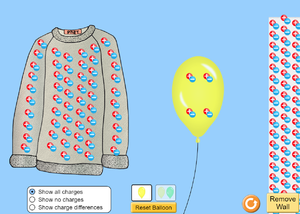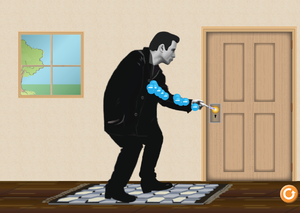Static Electricity
Contents
Key Stage 3
Meaning
Static Electricity is an imbalance of charges that causes a force which can attract or repel other objects.
About Static Electricity
- Static Electricity can be caused by rubbing two insulators together.
- Friction causes electrons to be transferred from one material to another.
- The material that gains electrons becomes negatively charged.
- The material which loses electrons becomes positively charged.
- Once a material has become statically charged it will repel anything with the same charge and attract anything with the opposite charge. This happens due to the electrostatic force.
- Lightning is caused by a build up of static electricity in which clouds gain electrons from the ground. The charge builds up until the electrostatic force is so large that the electrons are able to jump to the ground as a bolt of lightning.
To learn more about Static Electricity click on each of the picture below for a PHET simulation.
Key Stage 4
Meaning
Static Electricity is an imbalance of charges that causes a force which can attract or repel other objects.
About Static Electricity
- Static Electricity can be caused by rubbing two insulators together. For certain materials electrons can be transferred from one material to the other by friction.
- A material that gains electrons becomes negatively charged.
- A material which loses electrons becomes positively charged.
- Once a material has become statically charged it will repel anything with the same charge and attract anything with the opposite charge. This happens due to the electrostatic force which acts at a distance.
- Lightning is caused by a build up of static electricity in which clouds gain electrons from the ground. The charge builds up until the electrostatic force is so large that the electrons are able to jump to the ground as a bolt of lightning.
- A static charge can also be induced in a neutral object. This happens when a charged object is placed close to a neutral object. Since the electrons in the neutral object can move then they move towards a positive charge and away from a negative charge. This allows the neutral object to become slightly charged at one side. This is electrostatic induction.
To learn more about Static Electricity click on each of the picture below for a PHET simulation.

